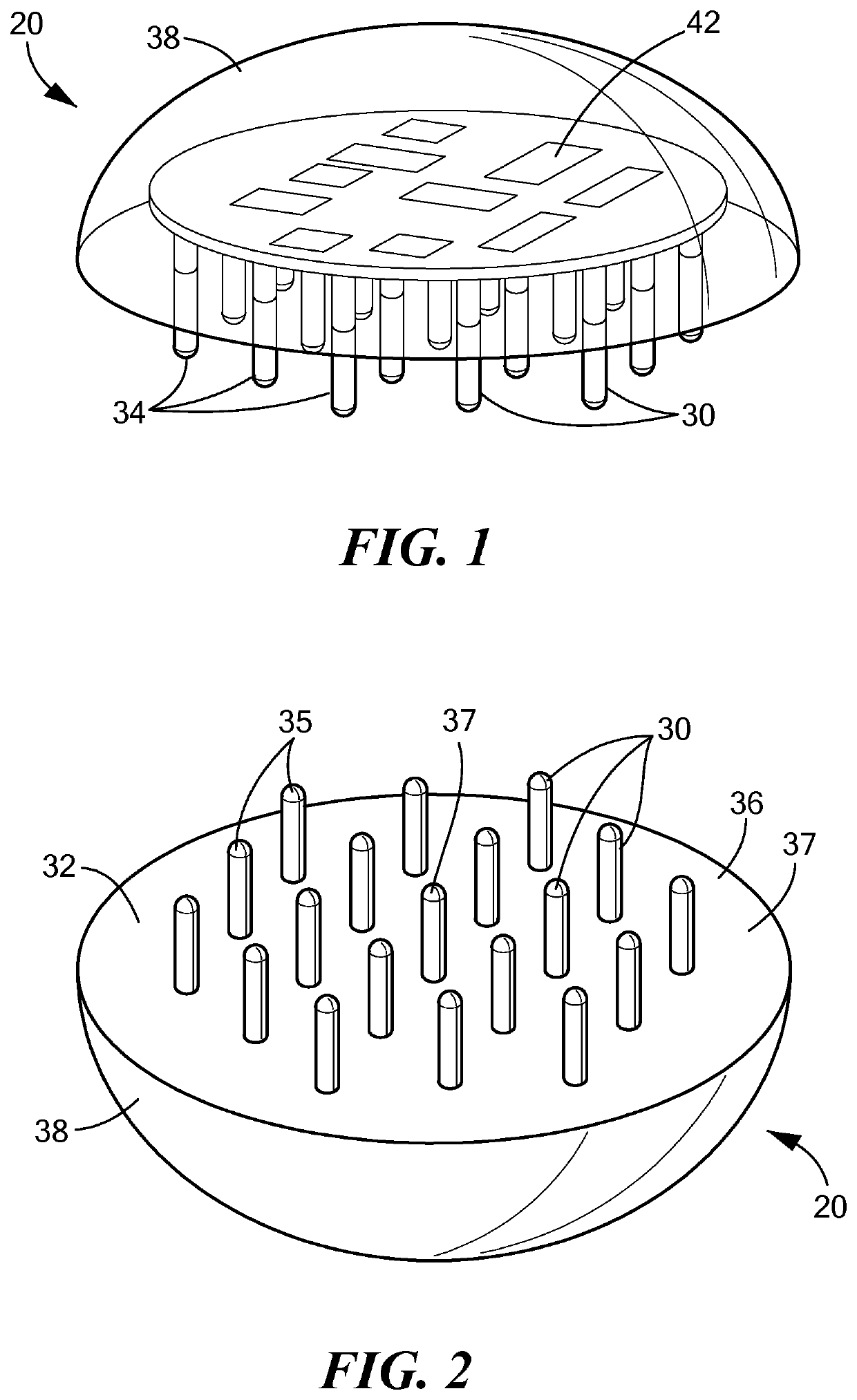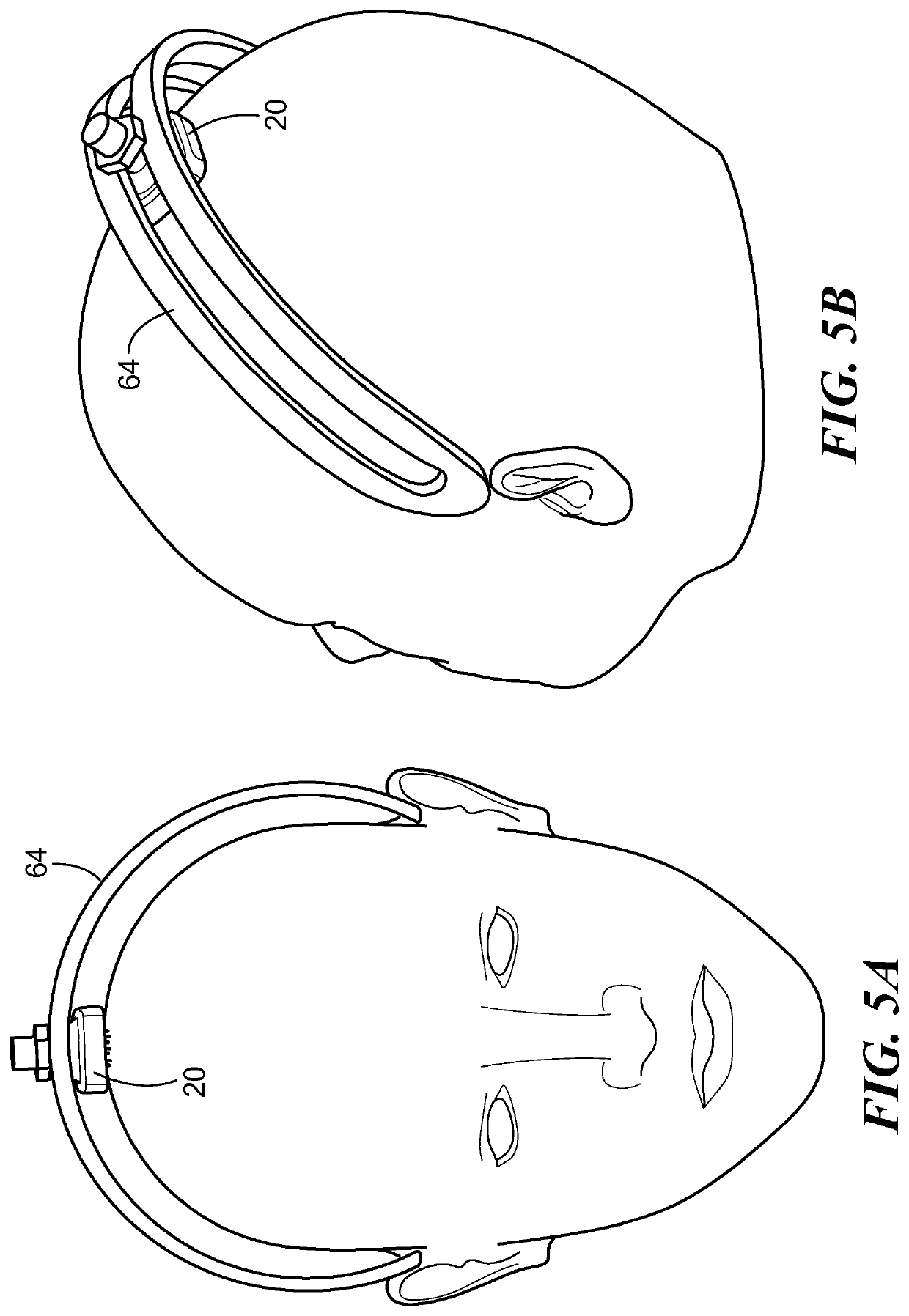Sensor system and process for measuring electric activity of the brain, including electric field encephalography
a technology of electric activity and sensor system, applied in the field of sensor system and process for measuring electric activity of the brain, including electric field encephalography, can solve the problems of inability to provide a direct measure of neuronal activity, limited temporal resolution (1 to 10 seconds), and high cost and risk, and achieve the effect of acceptable signal-to-noise ratio (nsr)
- Summary
- Abstract
- Description
- Claims
- Application Information
AI Technical Summary
Benefits of technology
Problems solved by technology
Method used
Image
Examples
example
[0071]An embodiment of a sensor assembly was tested to determine if EFEG provides additional information on brain activity compared to conventional and high-density EEG, and to determine if the closer electrode spacing, that is, an ultra-dense electrode density, within the sensor assembly is capable of providing additional EEG information compared to the sensor spacing or electrode density of traditional and high-density EEG.
[0072]In particular, a sensor array with an ultra-dense array of electrodes was used in which a square 4×4 grid of small diameter electrodes had an inter-electrode separation of 1 cm, or a density of 1.0 cm−2. For comparison with existing high-density EEG systems, the electrode density of several 128-sensor EEG nets from Electrical Geodesics Inc. was estimated as 0.167 cm−2. The electrode density of EEG nets with 64 sensors was estimated to be 0.084 cm−2; and the electrode density of a net with 256 sensors, currently the densest EEG nets commercially available, ...
PUM
 Login to View More
Login to View More Abstract
Description
Claims
Application Information
 Login to View More
Login to View More - R&D
- Intellectual Property
- Life Sciences
- Materials
- Tech Scout
- Unparalleled Data Quality
- Higher Quality Content
- 60% Fewer Hallucinations
Browse by: Latest US Patents, China's latest patents, Technical Efficacy Thesaurus, Application Domain, Technology Topic, Popular Technical Reports.
© 2025 PatSnap. All rights reserved.Legal|Privacy policy|Modern Slavery Act Transparency Statement|Sitemap|About US| Contact US: help@patsnap.com



